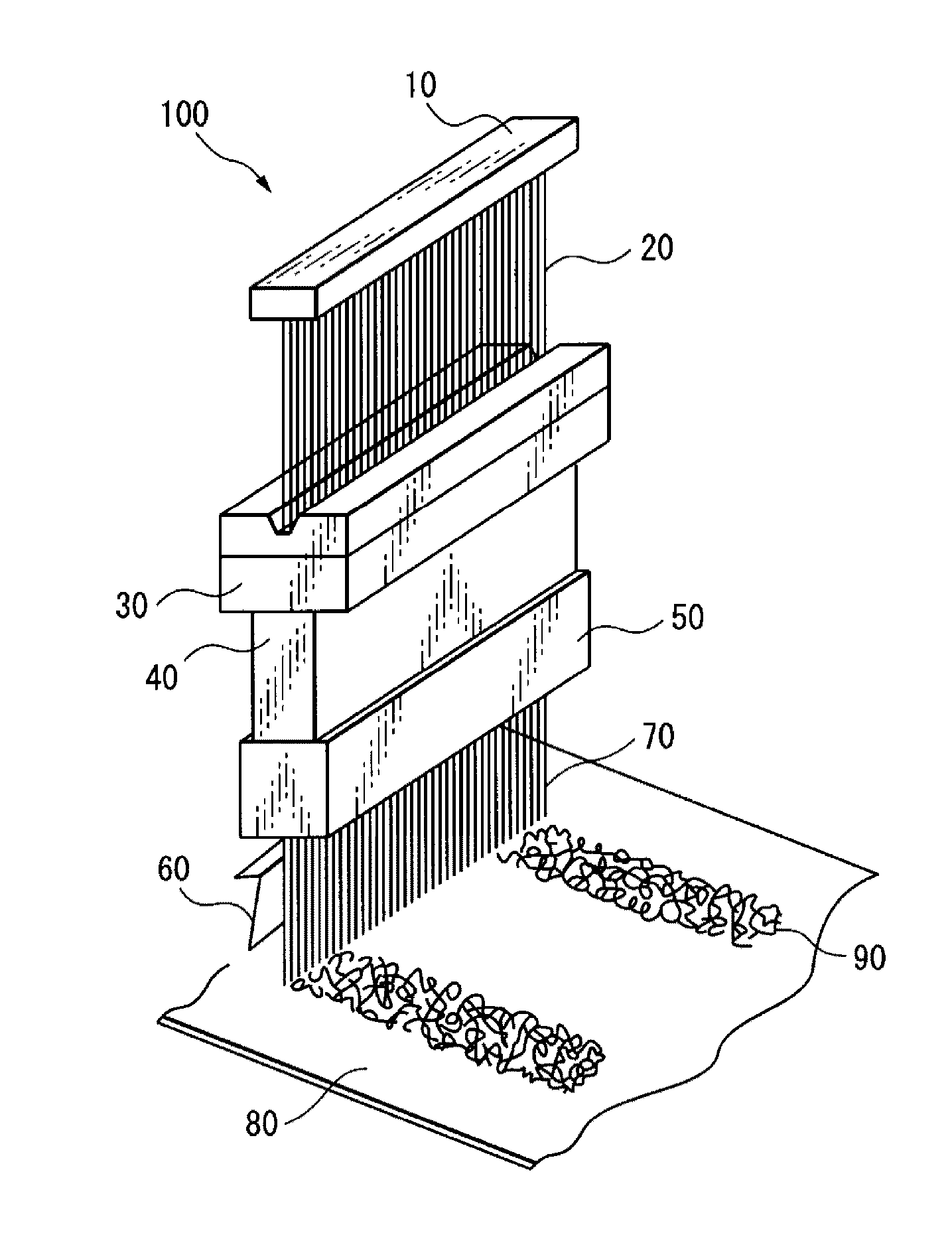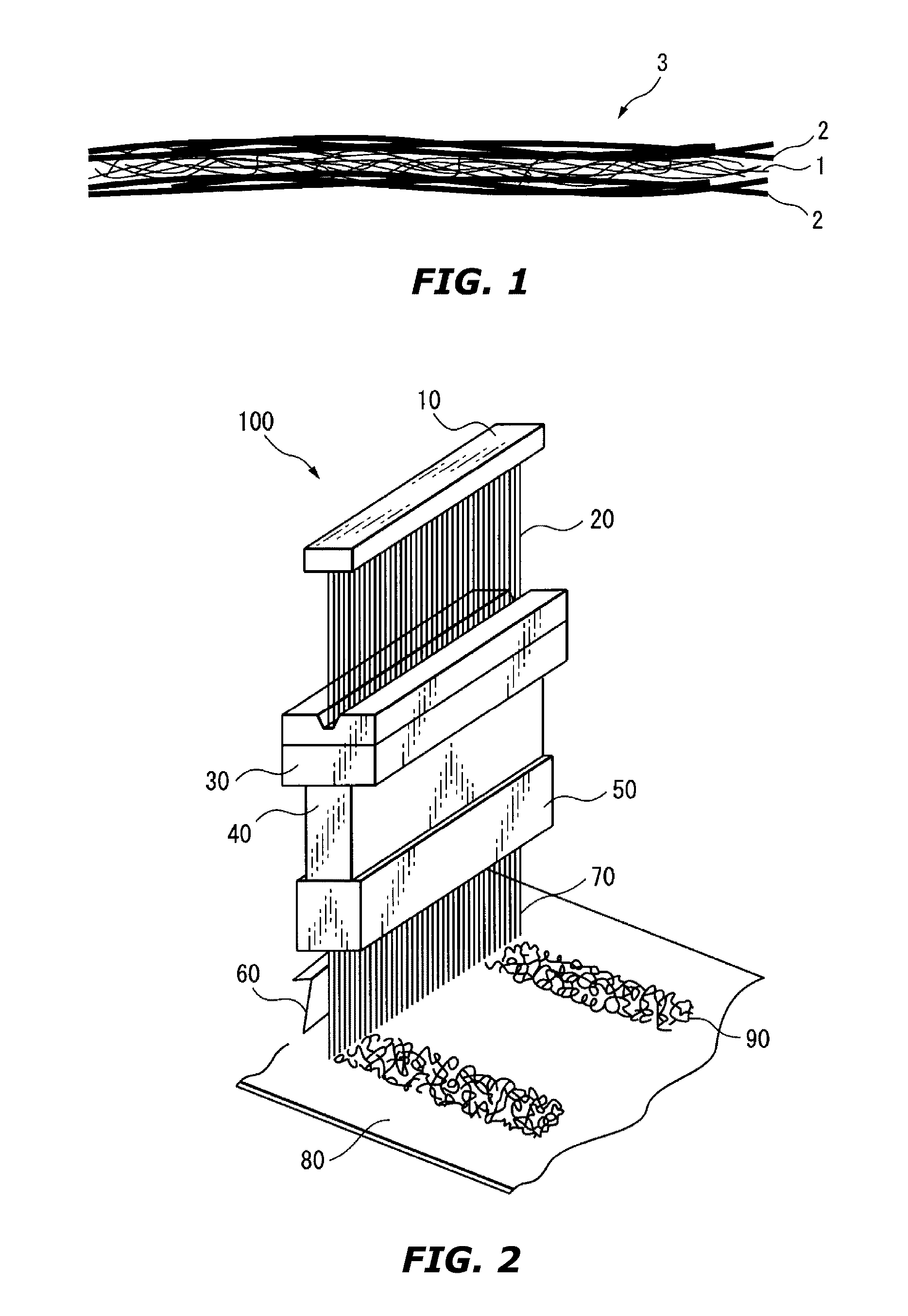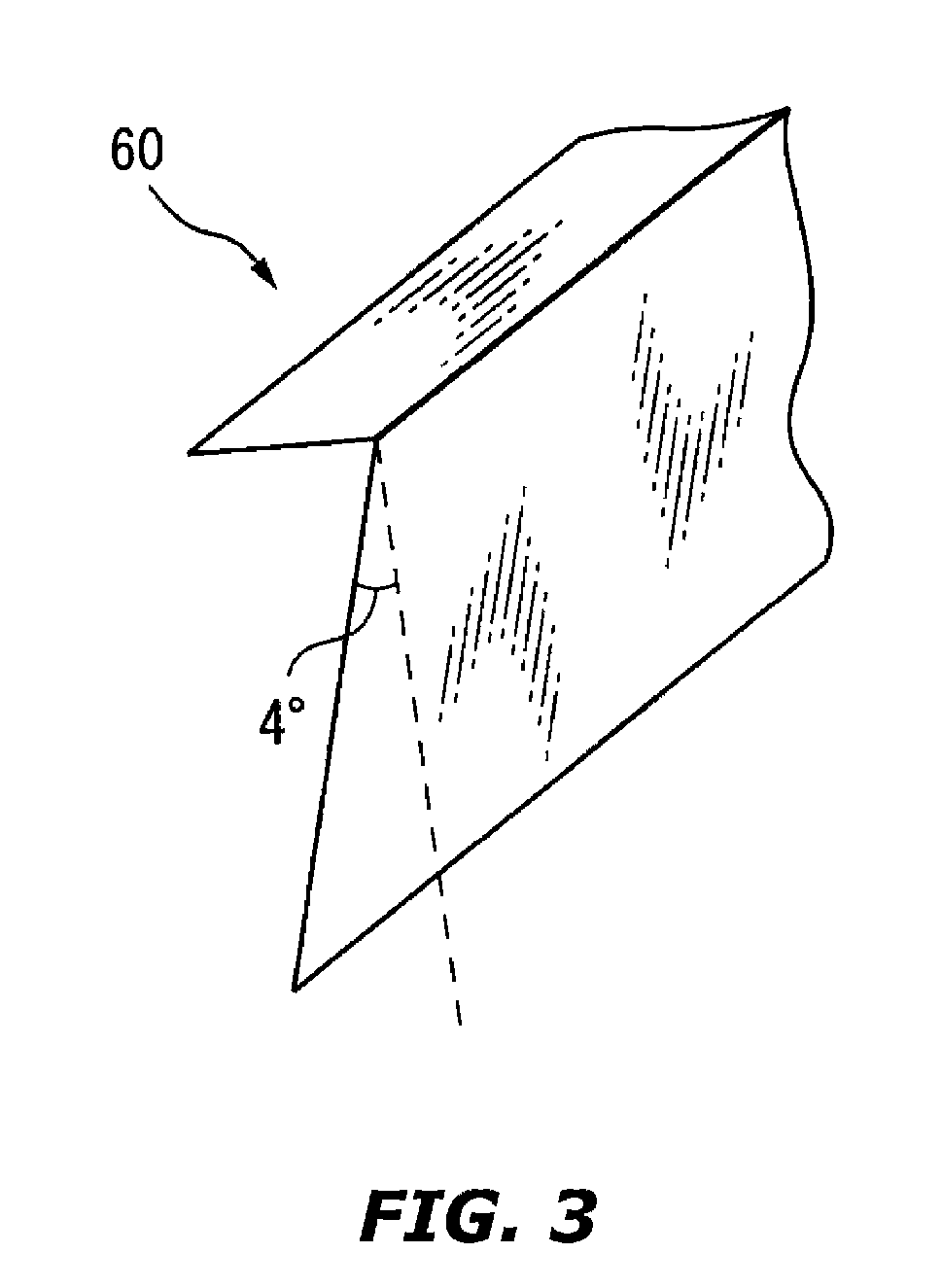Separator and Method of Preparing the Same, and Lithium Ion Secondary Battery
a separation device and separator technology, applied in the direction of cell components, final product manufacturing, sustainable manufacturing/processing, etc., can solve the problems of high temperature preservation properties and risky states, and achieve stable charge and discharge behavior, high rate characteristics, and suppression of short circuits
- Summary
- Abstract
- Description
- Claims
- Application Information
AI Technical Summary
Benefits of technology
Problems solved by technology
Method used
Image
Examples
example 1-1
[0248]95.0 parts by mass of Calcined kaolin 1 (average particle size: 0.8 μm), 1 part by mass of carboxymethyl cellulose, 10.0 parts by mass of acrylic latex (AcILTX, concentration of solid content: 40%, average particle size: 147 nm, the lowest film forming temperature: 0° C. or less), 1 part by mass of an aqueous solution of ammonium polycarboxylate (available from San Nopco Limited, trade name “SN Dispersant 5468”), 1 part by mass of a polyoxyalkylene-based surfactant (available from San Nopco Limited, trade name “SN-Wet 980”), and 150 parts by mass of water were placed in a container of a non-bubbling kneader NBK-1 (available from Nippon Seiki Seisakusho K.K., trade name), and were dispersed at the number of rotations of 1500 rpm for a dispersing time of 5 minutes to prepare a uniform slurry. The inorganic particles in the resulting slurry had an average particle size of 1.91 μm, and contained 24% by volume of particles having a particle size of 1.0 μm or less and 51% by volume ...
example 1-2
[0251]A slurry, a separator, and a lithium ion secondary battery were prepared in the same manner as in Example 1-1 except that Calcined kaolin 1 was replaced with Calcined kaolin 2 (average particle size: 1.2 μm). The inorganic particles in the resulting slurry had an average particle size of 3.04 μm, and contained 16% by volume of particles having a particle size of 1.0 μm or less and 65% by volume of particles having a particle size of 2.0 μm or more. d30 was 1.60 μm, and d10 was 0.78 μm. The separator had a porosity of 54%. No powder was peeled off from the surface of the separator. Although the pore size distribution of the separator is not shown, the separator had one local maximum value in the range of a pore size of 0.1 to 1 μm and one local maximum value in the range of a pore size of 1 to 10 μm.
example 1-3
[0252]A slurry, a separator, and a lithium ion secondary battery were prepared in the same manner as in Example 1-1 except that calcined kaolin 1 was replaced with calcined kaolin 3 (average particle size: 2.0 μm). The inorganic particles in the resulting slurry had an average particle size of 3.84 μm, and contained 16% by volume of particles having a particle size of 1.0 μm or less and 73% by volume of particles having a particle size of 2.0 μm or more. d30 was 2.10 μm, and d10 was 0.59 μm. The separator had a porosity of 53%. No powder was peeled off from the surface of the separator. Although the pore size distribution of the separator is not shown, the separator had one local maximum value in the range of a pore size of 0.1 to 1 μm and one local maximum value in the range of a pore size of 1 to 10 μm.
PUM
| Property | Measurement | Unit |
|---|---|---|
| pore size | aaaaa | aaaaa |
| porosity | aaaaa | aaaaa |
| particle size | aaaaa | aaaaa |
Abstract
Description
Claims
Application Information
 Login to View More
Login to View More - R&D
- Intellectual Property
- Life Sciences
- Materials
- Tech Scout
- Unparalleled Data Quality
- Higher Quality Content
- 60% Fewer Hallucinations
Browse by: Latest US Patents, China's latest patents, Technical Efficacy Thesaurus, Application Domain, Technology Topic, Popular Technical Reports.
© 2025 PatSnap. All rights reserved.Legal|Privacy policy|Modern Slavery Act Transparency Statement|Sitemap|About US| Contact US: help@patsnap.com



